If we thought that the decore, furnishings, service and meals at our hotels to date were very good, then we would have to say that the overall standard of our palatial Official State Hermitage Museum Hotel was truly exceptional.
Manager Alyona warmly welcomed us to the buffet breakfast restaurant. During our stay, we became most impressed with her total professionalism and genuinely friendly manner. The service was never over the top; it was simply spot on.
Breakfast comprised a wonderful and seemingly endless array of dishes ranging from delicately smoked salmon, soused butterfish and a myriad of local raw and cooked fish dishes, great Russian salads and sausages to the more traditional western styled foods with smoked bacon and heaps of buttery scrambled eggs and eggs every way..... I simply adore fish at any time of the day and found it really difficult, if not impossible, not to over indulge. Alan didn't worry. A holiday was no time to be on a diet and after all, we didn't eat lunch - did we?
Similarly, the service at the Reception and the Concierge Desk was equally as professional - and I was to find out later that afternoon - well above normal expectations.
As for our first day in Moscow, we had booked a First Day in St Petersburg Tour ("St Pete's Must See's") with the travel operators St Pete Private Tours (www.StPetePrivateTours.com) and we were informed some months ago that Nadya would be our guide.
It was not quite the season of the famous White Nights but the evenings were long and the mornings very early. We woke up at dawn and had time to explore the small hotel shop in the front foyer area. It contained beautiful items which would of course make perfect gifts. Rows of exquisitely hand painted Matryoshka dolls (sets of wooden female figures of decreasing size that are placed one inside another) and brilliantly jewelled Faberge Eggs were displayed in the shop window. Needless to say, they were very expensive but as the shop manager explained, they were all hand painted individual pieces. Unlike the buffet breakfast, I managed (but only just) to resist temptation to buy any. After all, we had three weeks of four-wheel drive travel through the Caucasus ahead of us and from our past travels of carting hand woven rugs and fine artwork, we knew all about how tiresome it was to carry additional goods.
The trouble with ageing is that everyone else starts to look like an adolescent. Nadya, met us spot on time. A warm, friendly and very youthful looking woman wearing a thick woollen scarf and a brown leather bomber jacket over jeans, Nadya was highly knowledgeable and deeply passionate about her home city of St Petersburg. Nadya spoke excellent English and had taken on quite a challenge that day. As mentioned, her manager Anna had agreed to Nadya accompanying us to the Armenian Consulate after our tour to hopefully obtain our Armenian visas. Also, as our mobile phone would not operate in Russia, Nadya had also kindly offered to help us purchase a local phone on our way to the Metro.
There was a lot to do and see in just one day - and to make things even more difficult, the weather was absolutely foul; it was just 7 degrees C with icy rain and bitterly cold gale force winds. Nothing seemed to deter our Nadya though, brightly explaining that the icy wet conditions were quite normal for her tours. We were not quite so philosophical but we had absolutely no choice. "Oh well, St Petersburg - here we go" we thought as we grabbed a hotel umbrella and left the comfort of our lovely hotel.
BRIEFING ON ST PETERSBURG
St Petersburg, the second largest city in Russia, is located over several swampy islands comprising "taiga" (sub-arctic evergreen coniferous forests) on the Neva River at the head of the Gulf of Finland on the Baltic Sea. We had always wanted to visit St Peterburg; the legendary and romantic city which is so evocative of an unsurpassed turbulent and violent history.
The foundations of St Petersburg are largely attributable to the insatiable desire of the reformist Tsar Peter the Great to make Russia into a leading European power. Following the capture of Swedish outposts at the start of the Great Northern War, he began the foundation of the his city with the construction of the Peter and Paul Fortress. In 1712, Peter moved the capital from Moscow to the beginnings of the city he called Sank Pieter Burch (in Dutch tradition after the patron saint of the city).
Peter's successors moved the capital back to Moscow but four years later, under Empress Anna of Russia, St Petersburg once again was designated as the capital of the Russian Empire. It remained the seat of the Romanov dynasty and the Imperial Court of the Russian Tsars, as well as the seat of the Russian government, for another 186 years until the Communist Revolution of 1917.
The emancipation of the serfs in 1861 brought a flood of impoverished workers into the city, leading to squalor, disease and widespread discontent. St Petersburg became a hotbed of strikes and political violence, leading to the 1905 Revolution.
In 1917, protests turned into general strikes and the troops mutinied, forcing the end to the monarchy. Tsar Nicholas II abdicated and later in an audacious coup, the Bolsheviks led by Vladimir Lenin, stormed the Winter Palace, marking the beginning of the 1917 Revolution, Soviet Rule and the rise of the Communist Party. Fearing a German assault on St Petersburg, the capital was returned to Moscow in 1918.
Renamed Leningrad after Lenin's death, the city became the hub of Stalin's industrialisation of the 1930's.
At the beginning of World War II, the Imperial government renamed the city as the Russian-styled Petrograd (Peter's City) to "de-Germanise" it by omitting any reference to "Sankt" and "Burg". During World War II, German forces besieged Leningrad for a total of 872 days, resulting in the longest, most destructive and most lethal sieges of a major city in modern times with more than one million civilians dying, mostly from starvation.
Following the fall of the Soviet Union in 1991, the city was voted by the citizens to once again resume the name of St Petersburg.
Today, the thriving city is home to some five million people. It is a major port on the Baltic sea and is generally recognised as Russia' most westernised and most beautiful city.
EXPLORING DOWNTOWN ST PETERSBURG - OUR PROBLEMATIC PHONE
In the howling wind and rain we forged our way down Pravdy Street and toward the Vladimirskaya Metro where thankfully there was a shop which sold all sorts of mobile (cell) phones. It was packed with young people who unlike us, appeared impressively tech savvy. The young staff on seeing us somewhat aged foreigners (and just like those in phone shops back in Australia) understandably ducked for cover.
We could not have done without Nadya. In fact I don't even think we would have been served. It was even difficult for her to explain that our Australian phone would not work in the country and we needed to buy a cheap as possible local one just for use in Russia and hopefully one that would work in the Caucasus. We walked away with a very simple little device and hoped it would do the job. I am sure the staff sighed with relief as we left. I know we did and I bet Nadya did too.
ST PETERSBURG METRO AND ST MICHAEL'S CASTLE
Tall spires of a magnificent black onion domed, cream church rose up out of the fog and heavy rain. The Vladimirskaya Cathedral was not part of our tour as such but like most parts of St Petersburg, a breathtakingly beautiful historic building, cathedral or church or fountain seemed to appear around every corner.
The five domed Russian Orthodox Church, dedicated to our Lady of Vladimir, was built between 1761 and 1769. It gives its name to the Vladimirskaya Square and is the close to the site of the Vladimirskaya Metro.
The metro, unlike Moscow appeared to be much simpler and signage was in both English and Russian. We arrived at Gostiny Dvor metro in seemingly no time, crossed the famous Nevsky Prospect and followed the Sadovaya Street to the impressive St Michael's' Castle
This beautiful castle has been silent witness to some of St Petersburg's most savage and dramatic events, including the short lived reign of Emperor Paul I, son of Catherine the Great. The strong willed Catherine had overthrown her husband Peter II to gain access to the Russian Imperial throne and then ruled the country until her death in 1796. By then her son Paul was 42 years of age and was intensely disliked by his family, the nobility and royal guards. Not surprisingly, he was paranoid about assassination (and with good reason) and built a fortified palace for himself.
The castle, built south of the Summer Garden and opened in 1800, is naturally surrounded by the waters of the Moyka and Fontanka Rivers. Dreaming of living in an impenetrable fortress, Paul turned the territory into an island which could only be entered across three drawbridges. Artificial canals were constructed on its other two sides and the palace was defended by cannons and bastions.
All four facades of St Michael’s Castle are different. Decorated with massive marble obelisks, the southern facade is particularly expressive and monumental. The northern facade, reminiscent of an Italian Renaissance villa, looks onto the Summer Garden. The eastern facade running along the River Fontanka is more modest. The western facade with its central protuberance was once the site of the palace chapel.
No wonder poor Paul was paranoid. He was assassinated in his own bedroom just 40 days into his reign. After his death, the imperial family moved back to the Winter Palace and the castle was given to the army's Main Engineering School and since has often been referred to as Engineer's Castle. Today, it is host to a branch of the Russian Museum.
CHIZHIK PYZHIK ("On Fontanka Drinking Vodka") AND THE SUMMER GARDEN
Our wet wanders took us along the eastern side of the castle along the Fontanka River where Nadya pointed out some very wealthy looking apartments on the opposite bank.
At the junction of the Moyki and Fontanka Rivers located half way down an embankment, lies the Chizhik-Pyzhik, one of the smallest monuments on the world. The tiny bronze statue of a European finch which stands at only eleven centimeters in height, is apparently part of a new trend of whimsical monuments in St. Petersburg.
The Chizhik-Pyzhik is supposed to represent the “common man” and is a monument "for the locals installed by locals, hidden away on the side of an embankment only for those who know of its existence... It also represents an increasing trend of anti-monumental culture, initiated as a backlash against the communist government’s plethora of massive monuments throughout Moscow and St. Petersburg..." (William and Mary in St Petersburg Site of Student Research)
The name Chizhik-Pyzhik is derived from an old Russian folk song line of "Chizhik-Pyzhik, where have you been? On Fontanka, drinking vodka...". In the bitter cold and rain, a glass of Vodka on the Fontanka would have gone down nicely I thought. Nadya insisted that we throw some coins on the bird's tiny platform which, if stayed put would bring us good fortune. Needless to say, we didn't have any success; our hands frozen by the whipping cold winds. At the time the conditions were too awful to stand around and chat, but I knew that Alan would be thinking the same as me "I can do without this frigg'n bird..."
We then walked up the northern side of the castle on the opposite bank of the Moyki River and edge of the Summer Garden. We did not have the time (nor the inclination in the rain) to walk through the gardens and instead made our way back through the pretty park studded streets and on to the Russian State Museum.
RUSSIAN STATE MUSEUM
Alan was having great trouble in the wind. His umbrella blew inside out, and then he dropped it and his backpack in the roadside gutter. Of all things uncomfortable, Alan simply hates getting wet and I knew just how much he would be disliking the rain and wind.
A short walk took us south and to Arts Square and the Russian Museum. The weather was just beginning to look brighter and not surprisingly, so did the museum.
Arts Square or Ploschad Iskusstv, was planned by Italian architect Carlo Rossi (who spent most of his life working in Russia and is often referred to by his Russian name Karl Ivanovich Rossi) in the early 1800's who also built most of the prominent buildings, including the magnificent Mikhailovsky Palace, which today houses the Russian Museum. Arts Square is also home to the Maly Theater (Mussorgsky Theater), the St. Petersburg Philharmonic Large Hall, and the Ethnographic Museum.
Outside the Museum is the fine sculpture of the famed Russian poet, Alexander Pushkin. The sculpture was the creation of Mikhail Anikushin and erected in 1957 to commemorate the 250th anniversary of the founding of St Petersburg. Interestingly, although the city was actually founded in 1703, the death of Joseph Stalin in 1953 delayed celebrations by a full four years.
Alexander Pushkin (1799 – 1837) was the famous Russian author of the Romantic Era who is considered by many to be the greatest Russian poet and the founder of modern Russian literature. Sadly, Pushkin was not around long enough to enjoy his fame.
Nadya looked sad as she told us of his unnecessary fate. Notoriously touchy about his honour, Pushkin apparently fought as many as twenty-nine duels and at the age of only 38 years was fatally wounded by a gun shot in an encounter with a French officer he accused of trying to seduce his wife Natalya Pushkina.
TOWARD NEVSKY PROSPEKT AND GOSTINY DVOR MALL
One of the wonderful attributes of beautiful St Petersburg is its highly compact nature. And it was just as well as we had a lot to see - and a looming deadline of having to be at the Armenian Embassy on the dot of 3.00 pm. Nadya was good company and chatted happily to us about her beloved city as we walked down Mikhalovskaya Street and past more of its legendary sites.
Within minutes we came across the St Petersburg Philharmonic Hall, famous for its symphony orchestra recital of Reinhold Gliere's "The Hymn to the Great City", a moving composition which praised the heroic defence of the Siege of Leningrad.
Closeby is what is regarded as the most luxurious five-star hotel in St Petersburg, the Belmond Grand Hotel Europe. Opened in 1875, the hotel was one of the great establishments of 19th Century Europe and has been host to those of the Who's Who ranging from famous composer Peter Ilych Tchaikovsky to H G Wells, Gustav V of Sweden, Elton John and Jacques Chirac.
The hotel was renamed the Belmond Grand Hotel Europe in 2014 when its parent company Orient Express Hotels was renamed Belmond Ltd. What a shame we thought to change from its exotic name to such a boring one.
A short walk just around the corner and we were on the famous Nevsky Avenue (Nevsky Prospekt), one of the best known streets in St Petersburg and the centre of the city's many fine historic buildings. Originally planned by Peter the Great as the beginning of a road to Novrogod and Moscow, the avenue today is St Petersburg's main thoroughfare and home to famous sites such as the neo-classical Kazan Cathedral, the Art Nouveau Bookhouse, the Gostiny Dvor shopping mall, the Russian National Library and the Anichkov Bridge and horse sculptures. Nevsky Prospekt was selected also as a setting for Dostoevsky's famous works Crime and Punishment and the Double: A St Petersburg Poem.
The Armenian Apolistic Church of St Catherine, a pretty blue and white church on Nevsky Prospeckt caught our eye. Since the foundation of the city, Armenian merchants and artisans had inhabited the banks of the Neva River. Peter the Great actually went out of his way to especially welcome them to the city, instructing the Senate: "The Armenians must be treated as nicely as much possible and facilitated where it is proper, in order to motivate them to arrive in greater numbers". A happier time for the Armenian people.
Following Catherine the Great's grant of a portion of her own land, the gracious Armenian Apolistic Church was constructed in 1799 within the ensemble of the then Armenian community of St Petersburg. The church features a dome based on a supporting crown, and a rather austere portico with exquisite sculptural relief. Against the inky violet sky, the beautifully proportioned little church looked quite surreal.
Our wanders took us past the Gostiny Dvor Shopping Mall which is located on a triangular block between the intersection of Nevsky Prospekt and Sadovaya Streets. The massive, yet elegant building extends for over a kilometer in length and embraces a staggering area of some 53,000 square meters. To us, the building looked just like a giant refurbished caravanserai.
It is hard to get your head around the age of buildings in St Peterburg. The Gostiny Dvor is one of the oldest shopping centres in St Petersburg and was one of the first shopping arcades in the world. The construction of the building began in 1757 and over the following years was continually re-vamped and re-built. During the 1990's it expanded to comprise ten indoor streets and as many as 178 shops and by the 21st century, it had become one of the most fashionable shopping centres in Eastern Europe. The mall gives its name to the nearby Gostiny Dvor Metro where we had arrived that morning for our tour of the city.
Roof hopping is bizarrely a popular past time of the young people of St Petersburg. Its name suggests exactly what it is - hopping from roof top to roof top to obtain the best views of the city. Officially illegal these days, it is still practised by some of the more courageous or perhaps more accurately, downright crazy inhabitants of the city. Our views from the St Petersburg Retro Photography Studio were fabulous, if somewhat less exhilarating, that those appreciated by the roof hoppers. The studio was wonderfully located opposite the Gostiny Dvor and looked over the extensive Nevsky Prospekt to the St Petersburg City Duma (Parliament) building and the old city streets. It certainly was a great - and safe - place to view the sites of downtown St Petersburg.
The studio may have been a good place to take a break and look over the views but we found the photography displays somewhat tedious. It was after 1.30 pm and time to move on to the Kazan Cathedral and the House of Books, and what we hoped would be the highlight of our day, our optional tour to the Church of the Saviour on The Spilled Blood.
KAZAN CATHEDRAL & THE HOUSE OF BOOKS
Nadya had timed our tour to perfection. Somehow we fitted in everything that was on our itinerary with minutes to spare. There was no time to explore the interiors of any of the sights we saw but then again, it was an orientation tour and even without our burdensome deadline for the Armenian Embassy, it would have been impossible to make even one site visit.
Rain began to pour down as we made our way up Nevsky Prospekt toward Kazan Square, home of the renowned Kazan Cathedral. In the rain and traffic it was only possible just to see the outline of the front of the cathedral but it was quite extraordinarily like the Basilica of St Peter's in Rome and in fact, it was inspired by the famous Roman building. It is not hard to imagine the furore its construction created, having a Catholic Basilica replica built in a Russian Orthodox community.
The cathedral which was constructed between 1801 and 1811 by the architect Andrei Voronikhin, boasts an impressive stone colonnade encircling a small garden and central fountain. After the war of 1812 during which Napoleon was defeated, the cathedral became a monument to the Russian victory. The cathedral was named after the "miracle making icon" of Our Lady of Kazan which was housed in the church until 1932. The Bolsheviks closed the cathedral and in 1932 it was re-opened as "The Museum of the History of Religion and Atheism". Services resumed in 1992 and four years later it was returned to the Russian Orthodox Church.
Just across Kazan Square and on the corner of Nevsky Prospekt and the Griboyedov Canal lies the House of Books, formerly known as Singer House.
Originally designed for the Russian branch of Singer Sewing Machine, the company was hoping to build it as a huge skyscraper similar to its counterpart in New York city. St Petersburg's building code however did not allow for structures taller than the 23.5 meters of the residence of the emperor, the Winter Palace. The architect found an ingenious solution to the problem and crowned the building with a glass atrium which is in turn, crowned by a glass globe creating the impression of substantial elevation. Cleverly, the optical elevation was subtle enough not to overshadow the Kazan Cathedral or the Church of the Saviour on The Spilled Blood.
Just after the 1919 Russian Revolution the building was handed over to the Petrograd State Publishing House where it quickly became the city's largest bookstore, and subsequently became known as the Dom Knigi or House of Books. The store remained open even during the Siege of Leningrad until 1942, but re-opened again in 1948. My photograph taken during the rain and dull conditions does not do the building any justice and for this reason, I am including a night photograph courtesy of www.wallpaperest.com.
CHURCH OF THE SAVIOUR ON THE SPILLED BLOOD
A short walk along Griboyedov Canal took us to one of the great icons of the world, the Church of the Saviour on The Spilled Blood. Also known as the Church of Resurrection of Jesus Christ, this brilliant building marks the very spot where the reformist Tsar Alexander II was fatally wounded in an assassination attempt on 1st March 1881.
After assuming power in 1855 in the wake of Russia’s disastrous defeat in the Crimean war against Britain, France and Turkey, Alexander II had initiated a number of reforms. In 1861 he freed the Russian serfs and undertook a rigorous program of military, judicial and urban reforms, never before attempted in Russia. However, during the second half of his reign Alexander II grew wary of the dangers of his system of reforms, having only barely survived a series of attempts on his life, including an explosion in the Winter Palace and the derailment
of a train. Like Paul I, his fear of assassination was very well founded.
After Alexander's death, his son and heir Alexander III, declared his intention to erect a church on the site of the assassination, in memory of his father. Furthermore, he gave strict instructions to have the church built in "traditional Russian style" as opposed to what he viewed as the contaminating Western Neoclassical and Baroque influence on the architecture of St Petersburg. The church was designed by Archimandrite Igmaty in the style of 16th and 17th century churches, and eventually completed by Alfred Parland.
With its multi-onioned, bejewelled domed roof, the building is highly reminiscent of St Basil's Cathedral in Red Square, Moscow - and apparently that of the Vladimir Cathedral in Kiev, Ukraine. Inside, the walls and ceilings are completely covered in intricately detailed mosaics; the main pictures being biblical scenes or figures with very fine patterned borders setting off each picture. The 7,500 square meters of mosaics is thought to be the largest area of church mosaics in the world.
This beautiful church has sadly endured a turbulent history. In the aftermath of the Russian Revolution the church was ransacked and looted, badly damaging its interior. The government closed the church in the early 1930s. During the World War II Siege of Leningrad when many people were starving to death, it was used as a temporary morgue causing even more damage to the church. After the war, it was used as a warehouse for vegetables, leading to the sardonic name of "The Saviour on Potatoes".
While Nadya was explaining the history, we just could not take our eyes off this extraordinarily magnificent building, nor could I stop taking photographs. Not that it helped as the dull conditions certainly did not do justice to the beauty and splendour of what is commonly referred to in St Petersburg as The Church on Blood. Inside the church was even more mind boggling; the exquisite detail of the sculpting and mosaics being almost overwhelming.
It was also the magnificent stonework that caught our eyes. We had never seen rhodonite before. The beautiful rosy pink lustrous stone streaked with blacks and greys adorned much of the interior, as did the rich multi-hued marble, jasper and porphyry. Nadya was concerned about the stone flooring. Apparently it had always been covered with hand woven rugs but recently these had been removed to display the wonderful lustrous and heavily detailed stone work. We shared her concern as the rug removal now allowed people to walk upon what to us looked like a huge art piece.
Our tour of the church was very special and well worth the optional extra. To us it was our chance of a lifetime to witness such a unique and simply spectacular piece of living art.
ST ISAACS CATHEDRAL
Nadya had planned our tour very well. On our three kilometer walk to the Armenian Embassy, we would have the opportunity to take in the grand St Isaacs Cathedral, the Monument to Nicholas I and the sights surrounding the beautiful Isaakievskiy Square. From there we headed through Palace Square, past the Admiralty Building and the famous Hermitage Museum (where we were to visit the following day).
St Isaacs Cathedral was well worthwhile seeing. It is a huge but beautifully proportioned cathedral set in luxuriant park like surrounds on the busy Isaakievskiy Square. Widely regarded as one of the most impressive landmarks of St Petersburg, it is the largest Russian Orthodox cathedral in the city and the largest Orthodox basilica in the world.
The cathedral was built between 1818 and 1858 by the French born architect Auguste Montferrand. Its facades are decorated with sculptures and massive granite columns made from single pieces of red granite, while the interior is adorned with intricately detailed mosaic icons, paintings and columns made from malachite and lapis lazuli. During the 1930's, like many of the city's churches, the cathedral was closed and re-opened later as a museum. Today, church services are held there only on major ecclesiastical occasions.
Across the square is the wonderfully located Astoria Hotel and where our friends Jim and Jenny Tait stayed during their visit some years ago.
STRESSED OUT AT THE ARMENIAN CONSULATE
We arrived at the Armenian Consulate at exactly 2.55 pm for our one hour "Window of Opportunity" to obtain our Armenian visas for our flight to Yerevan in two day's time. Without them we would be well and truly grounded in Russia - with no visas, Armenian or Russian. It didn't bear thinking about.
The Armenian Consulate was a miserable office located in Dekabristov Street in the south of St Petersburg. Even the three striped red, blue and yellow Armenian flag outside the building was frayed and sagging. Inside the Consulate was not much better, housing a depressing dark foyer and just a very small counter. Their were no seats at all. A number of dejected looking staff stumped by but it took quite some time before anyone attended the counter. The "ambiance" was not conducive to optimism but neither of us commented to each other at the time. It was too important for us to even acknowledge what a pitiful place it was. All I could think was "Thank god we have Nadya with us".
At last an unfriendly sluggish looking man in an ill fitting suit slumped down in the counter chair. He did not speak English but thankfully Nadya was able to speak to him in Russian. The conversation and body language was not looking good. The man just kept saying "No" and shaking his head while Nadya appeared to be pleading with him.
At last Nadya shrugged her shoulders, telling us that the Consulate-General was not in the office. He was actually in Egypt but the good news was that he would be at the consulate tomorrow. Apparently there was no way we could be issued Armenian visas without his authority. And that was that.
Over the last months we - and all our agents - had gone to so much time and trouble to ensure we could be issued with visas that day. Engulfed in a wave of anger, frustration and anxiety, I would loved to have punched the unfortunate consulate man but alas, it would not have been particularly good tactics. And anyway, he was behind the counter and I guess, he was a lot bigger than me. And, really it was not his fault...
Alan was philosophical saying we were at least fortunate to have one more day in St Petersburg - and Nadya was her usual bright self. She would show us how to get from our hotel to the Consulate tomorrow by train and if we did run into any difficulties, then she was prepared to hop on the Metro and come and help us. But it was impossible not to think about the then bleeding obvious. We now had just one hour in one day only - and these Consulate guys were not one bit impressive. "What will happen if we can't get our visas?" I asked Nadya. "Don't even think about it" she replied.
True to her word, Nadya diligently escorted us back on the Metro to our hotel, describing in every bit of detail our route back to the Armenian Consulate the next day. We could not fault our Nadya. She was exceptional in every way. We had been given a wonderful orientation tour and we were extremely grateful to her and to St Pete's Private Tours not only for their excellent tour, but also for their generosity in assisting us with our Armenian visas - which after all, was certainly not their responsibility.
WE CHILL OUT AT MICHELANGELO'S RESTAURANT
After a wonderful but pretty full day, and then a somewhat disconcerting time with the Armenian Consulate, we were ready for some time out. We always say that we will one day experience the fine dining of the very good hotels we stay in - but as mentioned, we never do. We are always too tired but most usually are simply "not in the mood".
Michelangelo's Restaurant* is part of the Official State Hermitage Museum Hotel, although to look at, seems like a separate building and business. It looked classy but casual - and just what we needed. We booked a table for the evening, although at 7.30 pm in the long days of May, it seemed like the middle of the afternoon.
The staff at Michelangelo's was fantastic; friendly and relaxed, and the atmosphere of the restaurant was warm and homely. The restaurant was styled on "Modern Italian", boasting a wonderful and interesting menu.
We were both craving soup. I opted for the "Mushroom Soup with Smoking Sphere" while Alan decided on a rich vegetable broth, both followed by pasta dishes. I had absolutely no idea what a "Sphere"** was, and assumed it may be a type of seafood. Anyway, mushrooms sounded warm and homely and just what I needed. My entree came as plain empty soup bowl containing only what looked like a giant white egg. Immediately, our waiter arrived with a jug of piping hot soup which with a flourish, he poured into my bowl and over the eggy lump. To our astonishment, the eggy creature grew and grew, before imploding itself into my mushroom soup. I prodded my soup soaked eggy beast to find it emitted a smoking mass with a wonderful tomato-oil interior. The soup was simply out of this world. A rich creamy wild mushroom broth, with a delicious smokey spicy tomato infusion. I was just so sorry that I had not thought to bring our camera - but after our long day tour, I was well "over photos".
Our meal was very, very good and we thoroughly enjoyed our relaxed evening - and an early night. But we could not shift that uneasy feeling - just what would happen with our Armenian visas the following day?
As Nadya said, it did not bear thinking about...
Postscript
* Information about Michelangelo's Restaurant can be found at: http://thehermitagehotel.ru/en/restaurant/michelangelo/
** Spherification is the culinary process of shaping a liquid into spheres which visually and texturally resemble roe. I still have no idea how my mushroom sphere managed to smoke as well.
A Walk With Nadya: Absorbing St Petersburg
Thursday, May 14, 2015
 St Petersburg, St.-Petersburg, Russian Federation
St Petersburg, St.-Petersburg, Russian Federation
Other Entries
-
1The Inspiration: But Where are the Caucasus?
May 086 days prior Crowdy Head, Australiaphoto_camera4videocam 0comment 0
Crowdy Head, Australiaphoto_camera4videocam 0comment 0 -
2Crowdy to Sydney - Save Us From a Bus Tour....
May 086 days prior Sydney, Australiaphoto_camera11videocam 0comment 0
Sydney, Australiaphoto_camera11videocam 0comment 0 -
3To Shanghai - When a Snake Meets A Tiger
May 095 days prior Shanghai, Chinaphoto_camera13videocam 0comment 0
Shanghai, Chinaphoto_camera13videocam 0comment 0 -
4To Moscow - Two Contrasting Faces of Russia
May 104 days prior Moscow, Russian Federationphoto_camera5videocam 0comment 0
Moscow, Russian Federationphoto_camera5videocam 0comment 0 -
5Russian History Time Line Summary
May 104 days prior Moscow, Russian Federationphoto_camera9videocam 0comment 0
Moscow, Russian Federationphoto_camera9videocam 0comment 0 -
6A Walk with Svetlana - Absorbing Moscow City
May 113 days prior Moscow, Russian Federationphoto_camera42videocam 0comment 0
Moscow, Russian Federationphoto_camera42videocam 0comment 0 -
7We Get Hopelessly Lost in Moscow...
May 122 days prior Moscow, Russian Federationphoto_camera13videocam 0comment 0
Moscow, Russian Federationphoto_camera13videocam 0comment 0 -
8Aboard the Sapsan: From Moscow to St Petersburg
May 131 day prior St. Petersburg, Russian Federationphoto_camera18videocam 0comment 0
St. Petersburg, Russian Federationphoto_camera18videocam 0comment 0 -
9A Walk With Nadya: Absorbing St Petersburg
May 14 St Petersburg, Russian Federationphoto_camera34videocam 0comment 1
St Petersburg, Russian Federationphoto_camera34videocam 0comment 1 -
10State Hermitage Museum & Adventures in St Petes
May 151 day later St. Petersburg, Russian Federationphoto_camera22videocam 0comment 1
St. Petersburg, Russian Federationphoto_camera22videocam 0comment 1 -
11Once We Had No Armenian Visas - Now We Have Four..
May 162 days later Yerevan, Armeniaphoto_camera5videocam 0comment 0
Yerevan, Armeniaphoto_camera5videocam 0comment 0 -
12The Caucausus - An Uncomfortable Dinner Party
May 173 days later Yerevan, Armeniaphoto_camera4videocam 0comment 2
Yerevan, Armeniaphoto_camera4videocam 0comment 2 -
13The Caucasus - A Historic Timelime Summary
May 173 days later Yerevan, Armeniaphoto_camera8videocam 0comment 0
Yerevan, Armeniaphoto_camera8videocam 0comment 0 -
14Armenia: Proud People of a Lost Land
May 173 days later Yerevan, Armeniaphoto_camera25videocam 0comment 0
Yerevan, Armeniaphoto_camera25videocam 0comment 0 -
15Under the Gaze of Noah
May 184 days later Yerevan, Armeniaphoto_camera36videocam 0comment 2
Yerevan, Armeniaphoto_camera36videocam 0comment 2 -
16Lake Sevan - The Tranquility and The Terror
May 195 days later Gyumri, Armeniaphoto_camera36videocam 0comment 0
Gyumri, Armeniaphoto_camera36videocam 0comment 0 -
17Gyumri: God Will Heal Your Wounded Soil
May 206 days later Bavra, Armeniaphoto_camera18videocam 0comment 0
Bavra, Armeniaphoto_camera18videocam 0comment 0 -
18Keti, Vano & Welcome to Georgian Hospitality....
May 206 days later Akhaltsikhe, Georgiaphoto_camera19videocam 0comment 0
Akhaltsikhe, Georgiaphoto_camera19videocam 0comment 0 -
19To Borjomi - Playground of the Tsars
May 217 days later Batumi, Georgiaphoto_camera25videocam 0comment 1
Batumi, Georgiaphoto_camera25videocam 0comment 1 -
20Batumi to Zugdidi - Mestia: Guests of the Dadianis
May 228 days later Mestia, Georgiaphoto_camera27videocam 0comment 3
Mestia, Georgiaphoto_camera27videocam 0comment 3 -
21Silent Witnesses of a Strange Place
May 228 days later Ushguli, Georgiaphoto_camera46videocam 0comment 0
Ushguli, Georgiaphoto_camera46videocam 0comment 0 -
22Kutaisi: "This is My Abode Forever and Ever..."
May 2410 days later Kutaisi, Georgiaphoto_camera26videocam 0comment 0
Kutaisi, Georgiaphoto_camera26videocam 0comment 0 -
23To Gori: Birth Place of Joseph Stalin
May 2511 days later Gori, Georgiaphoto_camera25videocam 0comment 0
Gori, Georgiaphoto_camera25videocam 0comment 0 -
24Gori to Tbilisi: Travelling Through Troubled Lands
May 2511 days later Tblisi, Georgiaphoto_camera27videocam 0comment 0
Tblisi, Georgiaphoto_camera27videocam 0comment 0 -
25In the Presense of St Nino & Vano's Perfect Picnic
May 2612 days later Tbilisi, Georgiaphoto_camera19videocam 0comment 0
Tbilisi, Georgiaphoto_camera19videocam 0comment 0 -
26In Fields of Gold: Davit Gareja Monastery Complex
May 2713 days later Davit Gareja, Georgiaphoto_camera21videocam 0comment 0
Davit Gareja, Georgiaphoto_camera21videocam 0comment 0 -
27Bodbe Monastry: Resting Place of St Nino
May 2814 days later Sighnaghi, Georgiaphoto_camera18videocam 0comment 0
Sighnaghi, Georgiaphoto_camera18videocam 0comment 0
Comments
2025-05-22
Comment code: Ask author if the code is blank

 St Petersburg, St.-Petersburg, Russian Federation
St Petersburg, St.-Petersburg, Russian Federation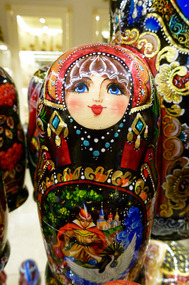
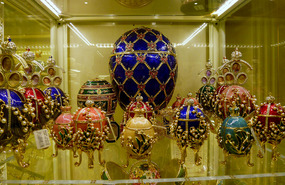
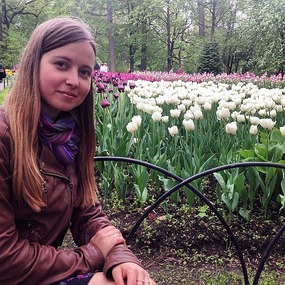
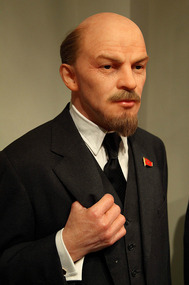
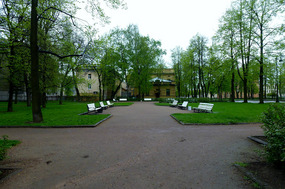
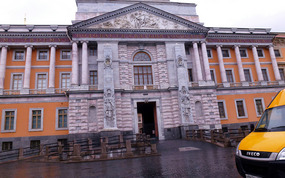
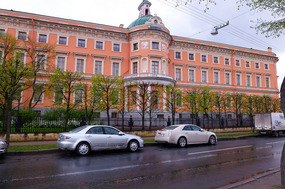
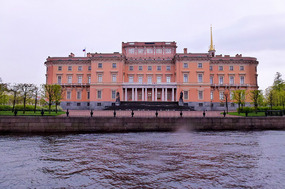
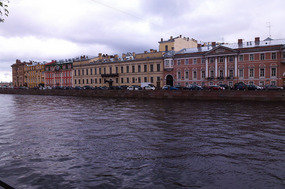
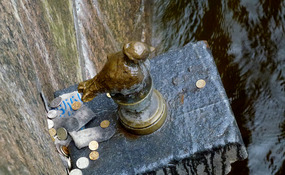
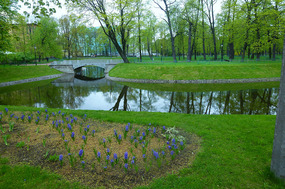
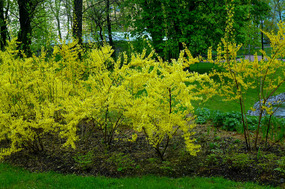
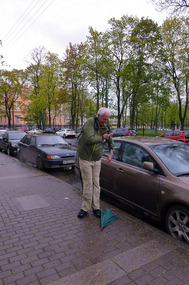
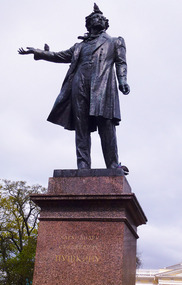

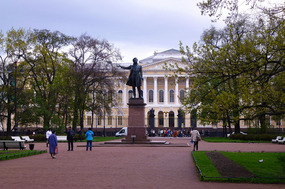
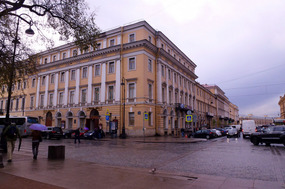
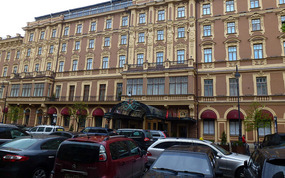
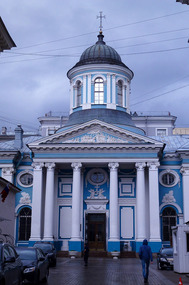

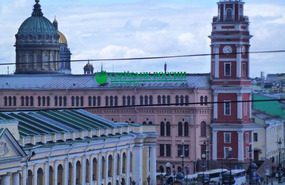
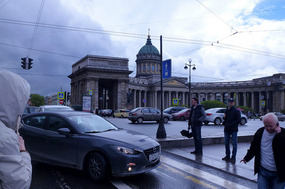
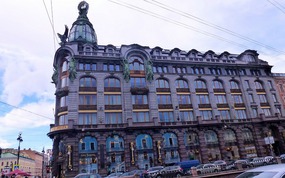
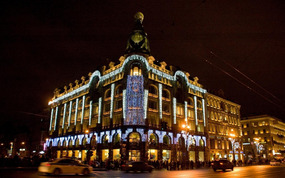
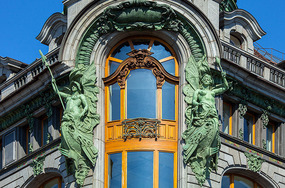
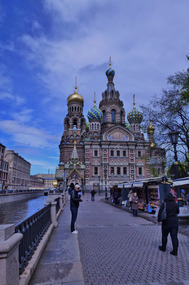
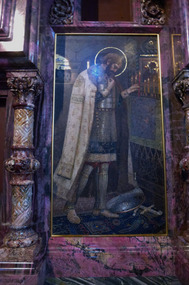

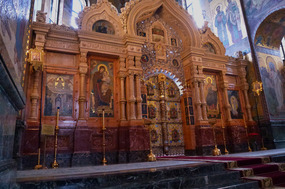

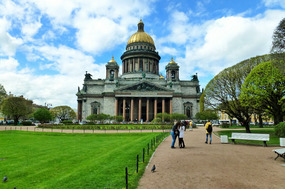
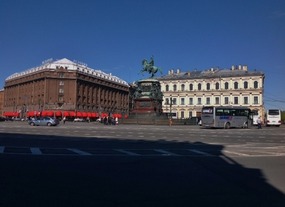
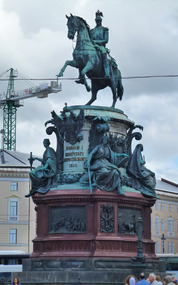
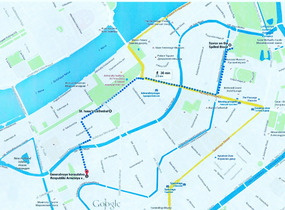





Asif
2015-08-18
Interesting reading the comparisons between our two trips. I was too tired walking to find the Gostivar Mall even though I was almost outside.